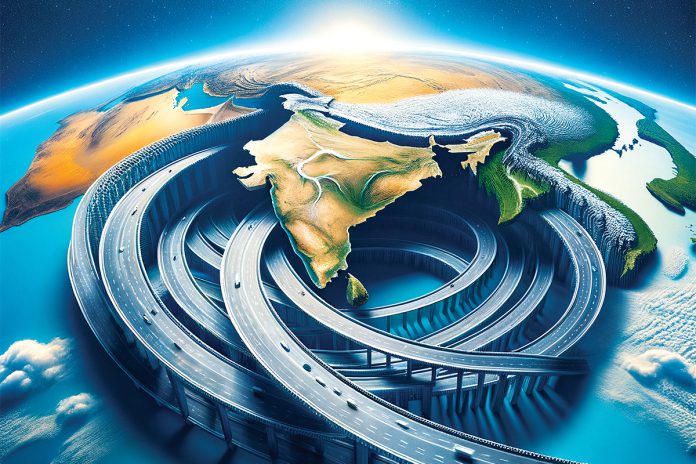India’s ambitions are stratospheric, and reaching for greatness will call for a multi-faceted effort
Words by Karan Karayi
Seventy-five years since our hard-won independence, the air is thick with a palpable sense of renewed confidence in India’s ability to carve out its rightful place on the global stage. The country is on a mission to constructively reform itself, harnessing its innate strengths to propel itself towards a future that not only uplifts its own people but resonates with the betterment of all humanity.
Over the past two decades, India has consistently achieved some of the world’s highest growth rates, quintupling its per capita income since the turn of the millennium. With a resolute determination to be counted among the developed nations by the time it celebrates its centenary of independence, India’s ambitions are stratospheric. However, realizing this lofty goal will require navigating a uniquely challenging phase in India’s history. The country must transition from a largely agrarian, informal economy to a services, advanced manufacturing, and knowledge-led hub, positioning itself to take full advantage of the world’s increasing technological sophistication and drive for sustainability.
Giving industry a shot in the arm
One of the key hurdles India faces is the need to foster a thriving private sector. Despite the public sector’s efforts to drive growth momentum, private investment growth has been relatively weak, hampering job creation and limiting the country’s full economic potential. The latest data on private equity deals in India paints a concerning picture, with investments falling to a six-year low in the financial year ending March 2024.
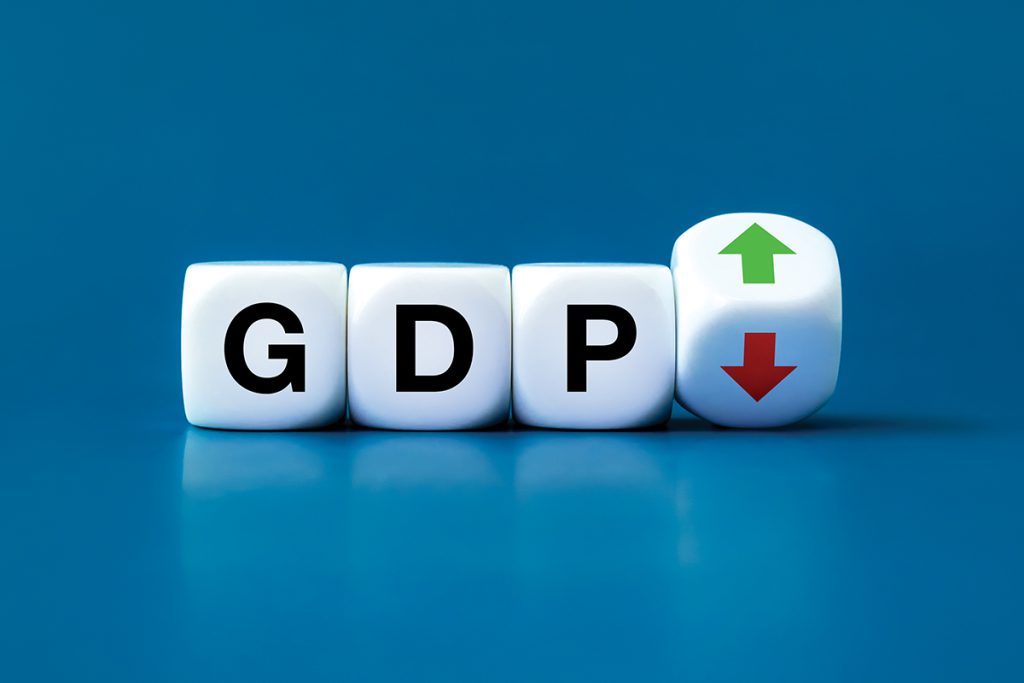
Geopolitical uncertainties and volatile market conditions have reduced liquidity in international markets, further exacerbating the situation. The crisis-ridden learning portal Byju’s and the fintech giant Paytm have both been forced to shed thousands of employees, underscoring the challenges facing India’s burgeoning tech ecosystem and that of not creating enough jobs across industries.
Yet, amidst these challenges, India also finds itself presented with a unique opportunity to leapfrog. The forces of digitization and climate change, once seen as threats, can now be harnessed to fuel the nation’s transformation. By embracing these disruptive trends and aligning its policies and strategies accordingly, India can position itself as a global leader in the age of technological advancement and sustainable development.
Unleashing the power of scale
A critical factor in India’s quest to become a developed nation by 2047 will be its ability to achieve globally competitive scale in targeted sectors. The Reserve Bank of India’s projections suggest that the country must target a tenfold increase in per capita GDP, from $2,410 in 2022 to $21,664 by 2047-48, to reach the high-income country threshold.
This will require a concerted effort to enable easier and faster scaling of enterprises, particularly in the micro, small, and medium enterprise (MSME) sector. The government has already taken steps in this direction, recalibrating MSME parameters and introducing performance-linked incentive schemes in select sectors. However, the momentum must be sustained for a prolonged period to ensure that a majority of India’s most competitive enterprises can attain globally competitive scale.
Harnessing the power of the demographic dividend
India’s population, expected to surpass China’s in the coming year, represents both its greatest opportunity and its greatest challenge. The sheer size of the workforce, if harnessed effectively, can be a powerful engine of economic growth and social transformation. However, ensuring that this demographic dividend translates into tangible progress will require a multifaceted approach.

Investing in education, skill development, and job creation will be crucial in unlocking the creative energies of India’s vast population. By equipping the workforce with the necessary skills and opportunities, the country can position itself as a global hub of innovation and productivity, driving its transition towards a services, advanced manufacturing, and knowledge-led economy.
Navigating the path to Developed Nation status
The road ahead for India is not without its obstacles, but the nation’s unwavering determination and the world’s growing interest in its success provide a strong foundation for the journey. As the country navigates the challenges of private sector investment, job creation, and enterprise-level competitiveness, it must also leverage its demographic advantage and harness the power of emerging technologies to propel itself forward.
The World Bank, which projects India’s GDP to grow at 7.5% over 2024, coupled with the International Monetary Fund’s forecast of China’s per capita GDP crossing the high-income threshold by 2025, serve as a testament to the country’s immense potential. If India can successfully navigate these challenges, it can provide a model for the world of inclusive, sustainable economic growth – a shining example of what can be achieved when a nation’s aspirations are matched by its unwavering determination and collective effort.
Strengthening the MSME sector
One of the key pillars of India’s economic transformation will be the revitalization and empowerment of its micro, small, and medium enterprises (MSMEs). These enterprises are the backbone of the nation’s industrial landscape, accounting for a significant share of employment and contributing to the country’s overall economic output.
The government’s recent initiatives to recalibrate MSME parameters and introduce performance-linked incentive schemes have been a step in the right direction. However, more needs to be done to address the challenges facing this crucial sector, such as access to financing, technological integration, and regulatory hurdles.
By streamlining the regulatory environment, providing targeted support and incentives, and fostering a thriving ecosystem for MSME growth, India can unlock the immense potential of this sector. As these enterprises attain globally competitive scale, they can become the driving force behind the country’s transition to a services, advanced manufacturing, and knowledge-led economy, creating millions of jobs and fueling sustainable economic development.
Harnessing the potential of the Services sector
India’s services sector has long been a key driver of its economic growth, accounting for a significant portion of the country’s GDP and employing a sizable workforce. As the nation embarks on its journey towards developed nation status, the services sector will play an even more pivotal role in shaping its future.
From information technology and financial services to healthcare and education, India’s services industries possess the potential to become global powerhouses, leveraging the country’s vast pool of skilled professionals and technological prowess. By fostering innovation, enhancing competitiveness, and expanding their global footprint, these sectors can become the engines of India’s economic transformation, driving job creation, boosting exports, and solidifying the country’s position as a hub of knowledge and expertise.
Gearing up the Manufacturing sector
While India’s services sector has been the primary engine of growth, the country’s manufacturing industry also holds immense potential. As global supply chains undergo a profound transformation, India has the opportunity to position itself as a preferred destination for advanced manufacturing, leveraging its large workforce, improving infrastructure, and growing technological capabilities.
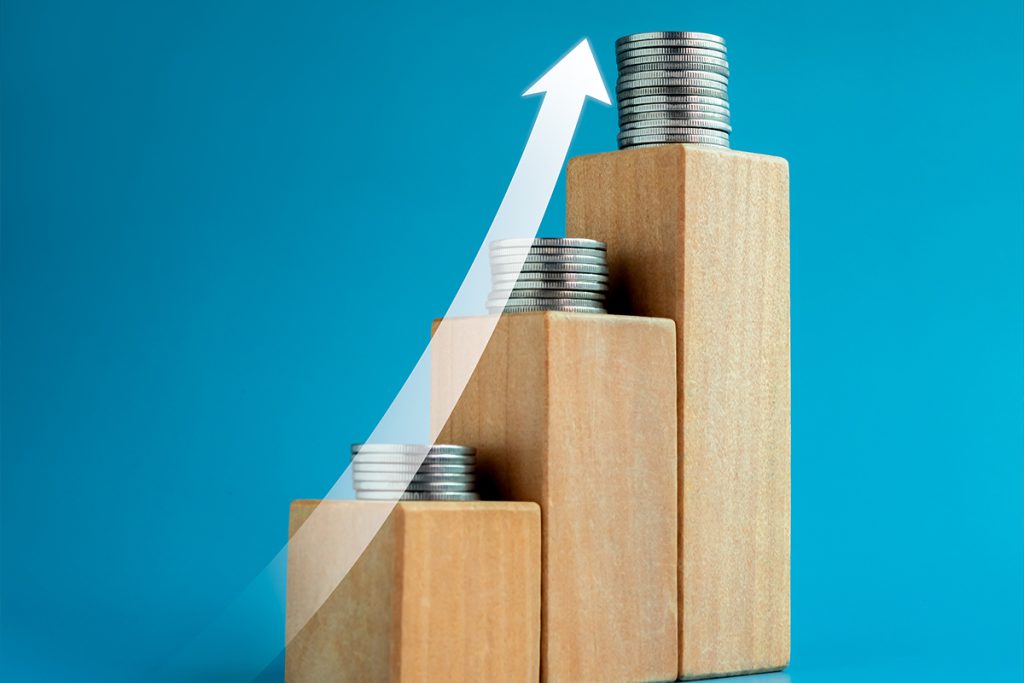
The government’s initiatives to streamline labor laws, consolidate public sector banks, and introduce performance-linked incentive schemes in select sectors have laid the groundwork for a more conducive environment for manufacturing growth. By further enhancing the ease of doing business, providing targeted support to key industries, and fostering collaborative partnerships between the public and private sectors, India can unlock the full potential of its manufacturing prowess.
As the country’s manufacturing capabilities mature and attain globally competitive scale, it can become a leading exporter of high-value products, reducing its reliance on imports and strengthening its trade position on the global stage. This, in turn, will contribute to the creation of millions of well-paying jobs, fueling the country’s transition towards a more prosperous and equitable future.
Fostering a culture of innovation and entrepreneurship
At the heart of India’s journey towards developed nation status lies the need to foster a vibrant culture of innovation and entrepreneurship. The country’s vast pool of talented individuals, combined with its growing technological capabilities, presents a unique opportunity to harness the creative energies of its people and transform them into engines of economic growth.
By investing in research and development, nurturing a supportive ecosystem for startups and small businesses, and providing access to capital and mentorship, India can empower its citizens to become the driving force behind the nation’s transformation. The success stories of homegrown unicorns like Paytm and Byju’s, despite the recent challenges they have faced, serve as a testament to the immense potential that lies within India’s entrepreneurial landscape.

As the country continues to streamline regulations, improve the ease of doing business, and create a more conducive environment for innovation, it can unlock the full potential of its entrepreneurial spirit, positioning itself as a global hub for cutting-edge technologies, disruptive business models, and game-changing ideas.
Strengthening institutions and governance
Underpinning India’s quest to become a developed nation by 2047 is the need for robust institutions and effective governance. The country has already made significant strides in this direction, with the government’s efforts to scrape outdated rules and regulations, simplify compliance, and enhance the ease of living and doing business.
However, more work needs to be done to ensure that these reforms are sustained and amplified across all levels of government and the private sector. By strengthening the rule of law, enhancing transparency, and fostering a culture of accountability, India can build the foundations for a more efficient, responsive, and inclusive system of governance.
Investing in the modernization and digitization of public services, streamlining bureaucratic processes, and empowering local authorities will be crucial in this endeavor. Additionally, the country must continue to crack down on corruption, ensure the fair and equitable implementation of policies, and promote a level playing field for all stakeholders.
Embracing global partnerships and trade
As India embarks on its journey towards developed nation status, it must also look beyond its borders and forge strategic partnerships with the global community. By leveraging its growing economic clout and technological prowess, the country can position itself as a key player in the international arena, shaping the global discourse on issues ranging from climate change to digital governance.
Through mutually beneficial trade agreements, collaborative research initiatives, and knowledge-sharing platforms, India can tap into the vast resources and expertise of its international partners, while also contributing its own unique perspectives and solutions to the world’s most pressing challenges. This global engagement will not only strengthen India’s economic standing but also enhance its soft power, positioning the country as a respected and influential voice on the global stage.
Ensuring inclusive and sustainable growth
At the heart of India’s vision for a developed nation lies the fundamental principle of inclusive and sustainable growth. The country must ensure that the benefits of its economic transformation are equitably distributed, empowering all segments of society and leaving no one behind.
This will require a multi-pronged approach that addresses the deep-rooted social and economic inequalities that have long plagued the nation. Investments in education, healthcare, and social welfare programs must be prioritized, ensuring that every citizen has access to the resources and opportunities needed to thrive.
Similarly, India’s pursuit of economic growth must be firmly grounded in the principles of environmental sustainability. By aligning its policies and strategies with the global agenda for sustainable development, the country can demonstrate that prosperity and environmental stewardship are not mutually exclusive, but rather complementary goals that can be achieved in harmony.
Realizing the dream of a Developed India
As India looks ahead, the nation stands at a crossroads, poised to embark on a transformative journey that will define its future for generations to come. The path ahead is not without its challenges, but the country’s unwavering determination, its vast untapped potential, and the world’s growing interest in its success provide a strong foundation for the road ahead.
The journey towards developed nation status by 2047 will require a sustained and concerted effort, but the rewards of success are immense. Not only will it uplift the lives of India’s 1.4 billion citizens, but it will also serve as a beacon of hope and inspiration for the rest of the world, demonstrating that with vision, determination, and collective action, even the most ambitious dreams can be realized.
As the nation embarks on this historic endeavor, the world watches with bated breath, eager to witness the unfolding of a truly transformative story – one that will shape the future of not just India, but the entire global community.
Anandh: Use these quotes throughout the story, visually, will get some more quotes we can add, have reached out to people.
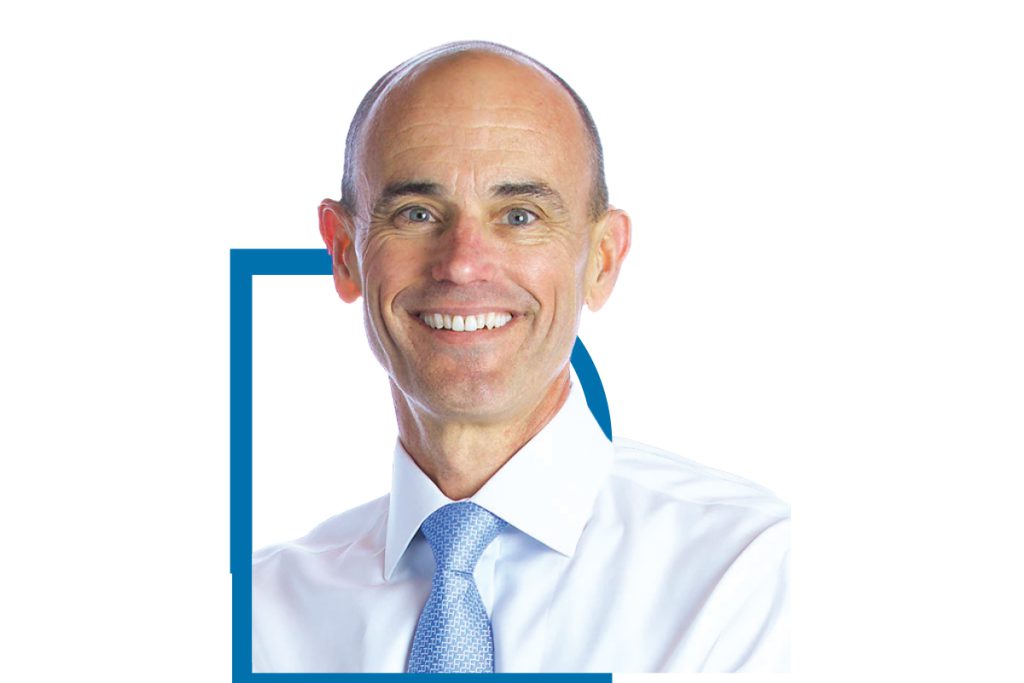
“Many people have said that it’s India’s decade. I actually think it’s India’s century when we look at some of the raw ingredients here. India is the future talent factory for the world. By 2047, India would have 20% of the world’s working population. And with supply chains being reimagined, it has massive potential for India across all aspects of manufacturing.”
- Bob Sternfels, CEO, McKinsey & Co
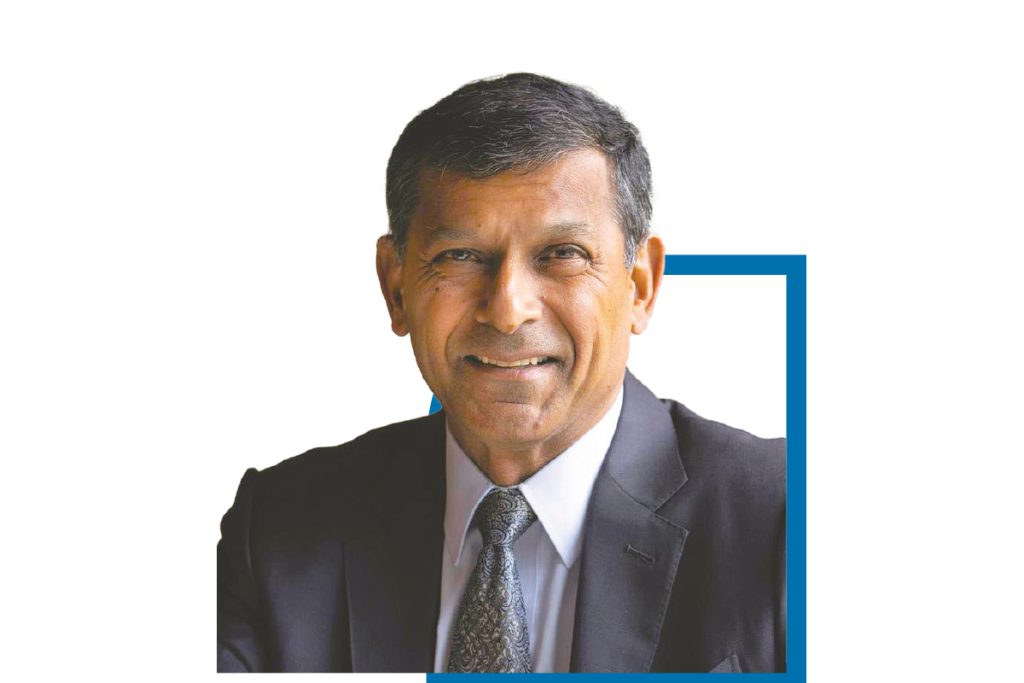
“We’ve got many more years of hard work to do to ensure the hype is real. Believing the hype is something politicians want you to believe because they want you to believe that we have arrived…But it would be a serious mistake for India to succumb to that… We have a growing workforce, but it is a dividend only if they’re employed in good jobs, and that’s, to my mind, the possible tragedy that we face.”
- Raghuram Rajan, former RBI governor, and former Chief Economist and Director of Research at the International Monetary Fund
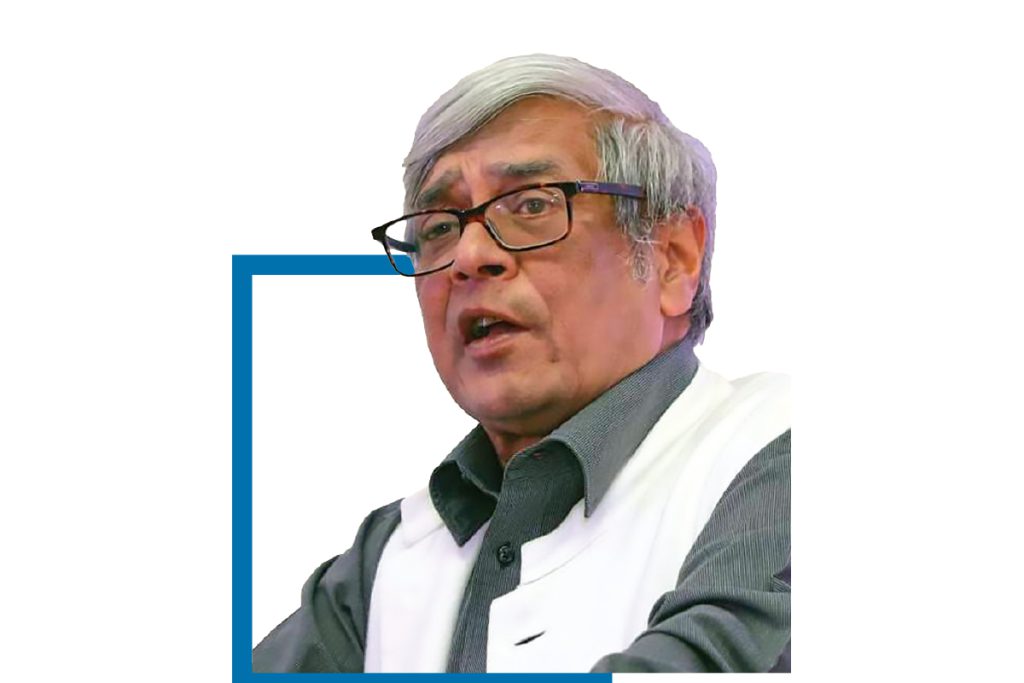
“In that transition to 2047, it (India’s growth rate) will pass through the upper-middle-income category and approach the high-income status—presently defined as more than US$ 12,695. This will have implications that are impossible to completely grasp today. Poverty levels will decline sharply. There will be socioeconomic churn. Since the GDP is an imperfect measure, the United Nations Development Programme (UNDP) has evolved the notion of the human development index (HDI), based on per capita income, life expectancy, and education indicators. By 2047, India will move from the present medium human development category to the high human development category. The global clout will increase greatly.”
- Dr. Bibek Debroy, Chairman, Economic Advisory Council to the Prime Minister

“South Asia is failing right now to fully capitalize on its demographic dividend. This is a missed opportunity…Sustaining growth will require increasing employment ratios, especially in the non-agriculture sector and among women, through measures to remove obstacles to growth for businesses, increase openness to international trade, ease labor market and product market restrictions, build human capital, and strengthen equality of women’s rights.”
- Franziska Ohnsorge, Chief Economist for South Asia, World Bank
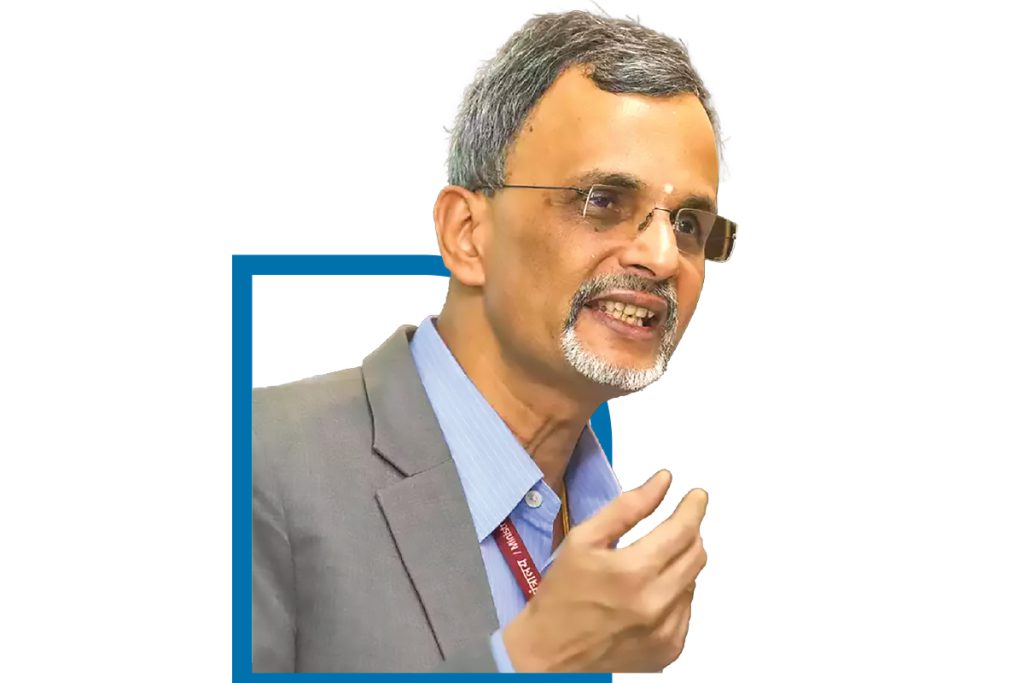
“We need to ensure that our demographic dividend is indeed a demographic dividend and that requires focus on skilling in areas of green technology, artificial intelligence and also other infrastructure skills that our industry would require.”
- V Anantha Nageswaran, Chief Economic Advisor (CEA) in the finance ministry
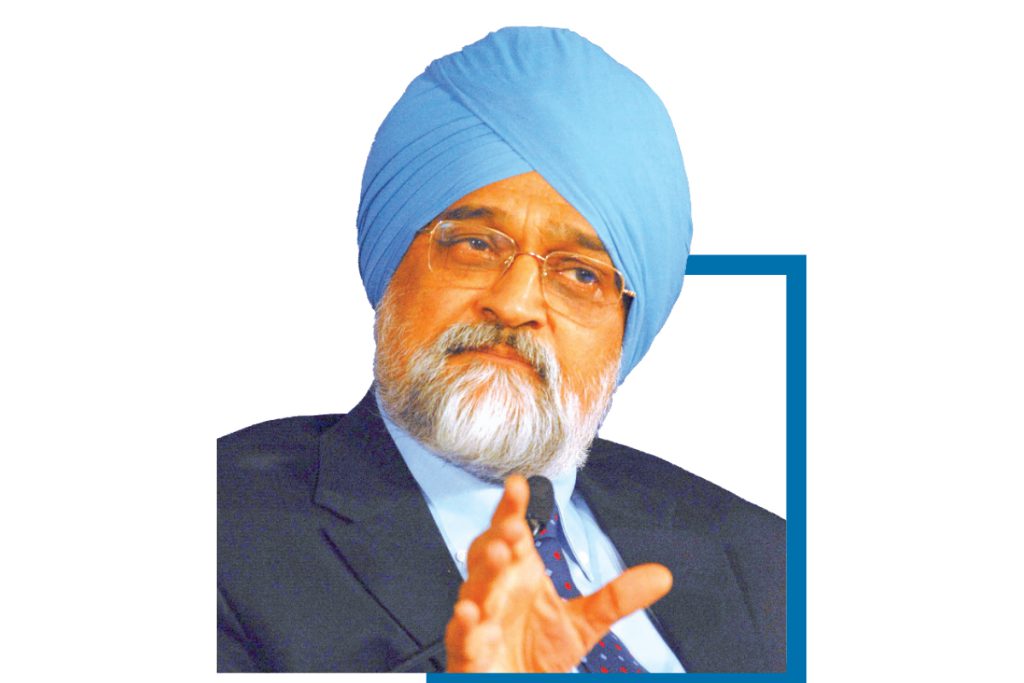
“We could end up with a high-income economy in which the distribution deteriorates so much that large numbers of people are left out. I’m not saying it will happen, but that’s an issue. We need that 8.5 percent growth to be inclusive.”
- Montek Singh Ahluwalia, former Deputy Chairman of the Planning Commission


